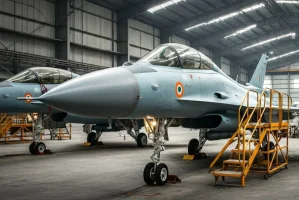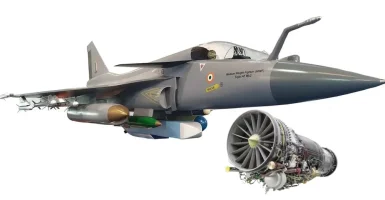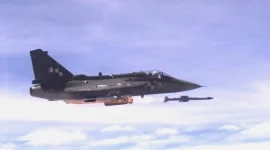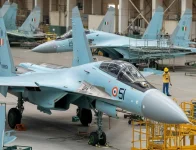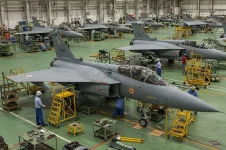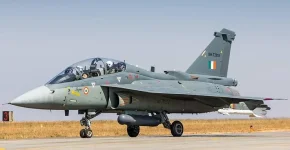- Views: 2K
- Replies: 6
In a major development for India's military aviation, Hindustan Aeronautics Limited (HAL) is modifying the retired HJT-16 Kiran MkII trainer aircraft to function as a control station for the futuristic CATS Warrior unmanned combat drone.
This initiative represents a critical step in developing Manned-Unmanned Teaming (MUM-T) capabilities, a modern warfare concept where manned aircraft work in synergy with autonomous drones.
The Kiran MkII, an intermediate jet trainer that served the Indian Air Force (IAF) for decades, is being repurposed into an Optionally Manned Combat Aircraft (OMCA).
The project involves converting the aircraft's second cockpit, previously used by a flight instructor, into a sophisticated mission control hub. This hub will be equipped with advanced systems, including secure data links and mission computers, allowing a co-pilot to command and control the CATS Warrior drone during complex combat scenarios.
This effort is a key part of the broader Combat Air Teaming System (CATS) program, which aims to create a network of manned and unmanned platforms that can act as a "force multiplier" for the IAF.
The development of the command systems is a collaborative effort between HAL's own research centres and the Centre for Artificial Intelligence and Robotics (CAIR), a laboratory under the Defence Research and Development Organisation (DRDO).
A clear timeline has been set for the project's next phases.
Following a successful maiden flight of the modified Kiran, dubbed the "Unmanned Kiran," on January 27, 2025, a second, more crucial test flight is scheduled for early 2026. This flight will focus on validating the data link and communication between the mothership and the drone.
Success in these trials will pave the way for the first flight of the CATS Warrior drone, which is anticipated in late 2026.
The CATS Warrior itself is progressing on schedule, having completed a successful engine ground run in January 2025.
HAL is also exploring collaboration with Rolls-Royce to develop a more powerful engine for the drone to support its mission requirements.
By using a proven and retired airframe like the Kiran, HAL is employing an innovative and cost-effective strategy to accelerate the testing and development timeline.

